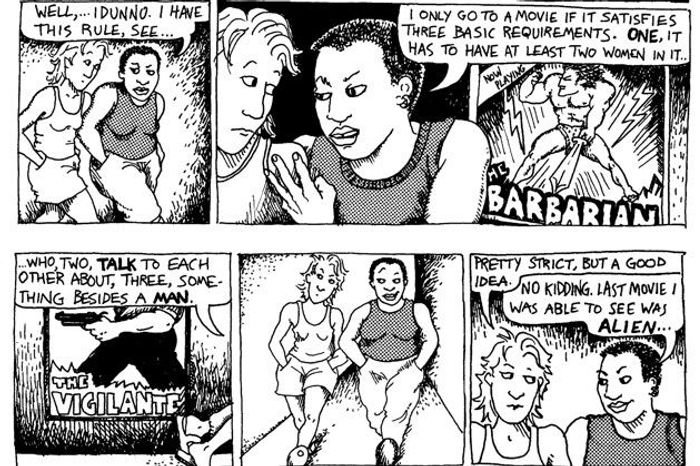Does your manuscript pass this diversity test?
Updated: Oct 11, 2022
Unless you have been so immersed in writing your novel, in a cave, in the wilderness with no internet or t.v. service with only a typewriter, reams of paper, and boxes of typewriter ribbon, you have been hearing much about diversity in movies and television. Visual media has been challenged by viewers and insiders to be more diverse and inclusive in many the same ways as the publishing industry has in recent years.
To help gauge whether a script, show, or film is inclusive critic Manohla Dargis fashioned the DuVernay test named for African American director Ava DuVernay but based on the Bechdel test named for creator, cartoonist Allison Bechdel. In Bechdel's comic "Dykes to Watch Out For" two woman talk about their requirements for going to see a film by giving it three simple rules.
Allison Bechdel's original piece that inspired the Bechdel test. -Allison Bechdel
There have to be at least two women in the film
Who to talk to each other
About something other than a man
The DuVernay test simply replaces "women" with "people of color" and the final rule being the characters have to talk about something other than race. Although simplistic it works well for films but does it apply effectively to manuscripts?
I'm going to be as broad as possible in this adaptation because I want your books to be as diverse as possible so instead of naming a particular identity I'll use the catchall of "marginalized identity."
Are there at least two characters with marginalized identities in the story?
Do they speak to one another?
About something other than their marginalized identity?
Would your manuscript pass?
To be clear this test doesn't prove your manuscript is without bias or is perfectly diverse and include. This test can help you self-check and determine if the characters with marginalized identities have utility and meaning in the plot and aren't just Quota Characters. Administering this test and fixing the oversights to your own work can help you give your characters real meaning outside of their race, gender, disability..etc.
I challenge you to do this with all of your marginalized characters (I hope you have more than one). If you aren't sure how to effectively achieve this, talk about with your sensitivity/authenticity reader.
If you think other rules should be added, include them below in the comments section.


